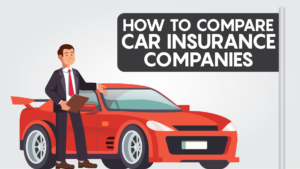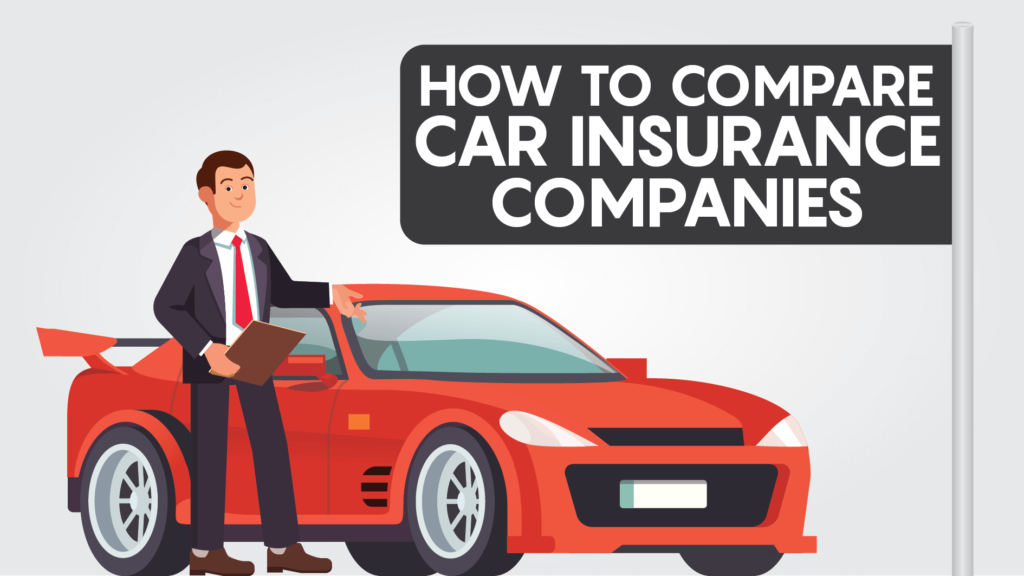Car insurance is something every driver needs—but navigating the world of quotes, coverage options, and hidden fees can feel overwhelming. While many drivers focus on getting the cheapest policy, making the wrong move while shopping for car insurance can cost you thousands down the line.
To help you avoid common pitfalls, this guide covers the top mistakes drivers make when shopping for car insurance in 2025—and how you can steer clear of them.
1. Only Looking at Price
Let’s start with the biggest mistake: shopping on price alone.
It’s easy to jump on a $45/month quote—but if it only includes the state minimum coverage, it might not help you much when you need it.
Why It’s Risky:
- May not cover all damages in an accident
- May exclude uninsured/underinsured coverage
- You could be financially liable for thousands
What to Do Instead:
Compare coverage, deductibles, exclusions, and customer reviews—not just the bottom-line price. Choose a policy that balances affordability and protection.
2. Not Comparing Enough Quotes
Many drivers get a quote from one or two companies and call it a day.
Why It’s Risky:
You could be overpaying by hundreds per year. Rates vary widely by insurer due to differences in risk models, discounts, and underwriting.
What to Do Instead:
Use platforms like:
Compare at least 4–5 providers. Include both major names and regional insurers—they often offer better local rates.
3. Failing to Match Coverage When Comparing Quotes
It’s common to receive a $90 quote from one insurer and $120 from another—but if the $90 quote has lower liability limits and higher deductibles, it’s not a true deal.
What to Do Instead:
Always compare:
- Same liability limits (e.g., 100/300/100)
- Same deductible amounts
- Same optional coverages
Use a spreadsheet to track quotes side-by-side.
4. Ignoring Customer Service and Claims Ratings
Low premiums are attractive—but if your insurer drags its feet or denies claims unfairly, you’ll regret it fast.
Why It’s Risky:
- Poor service during a stressful accident
- Long delays in repairs or reimbursement
- Surprise claim denials
What to Do Instead:
Check reviews and ratings on:
- J.D. Power
- Better Business Bureau (BBB)
- NAIC Complaint Index
- Forums or Reddit threads (for real driver stories)
Prioritize insurers known for fair and fast claims service.
5. Underinsuring Yourself to Save Money
Many drivers lower their liability limits to the legal minimums thinking they’re saving money. In 2025, with vehicle repair costs and medical bills rising, this is a huge risk.
Example:
Your state minimum is $25,000 in property damage liability. You total a Tesla worth $90,000. You’re personally responsible for the remaining $65,000.
What to Do Instead:
- Go beyond the minimum.
- Consider 100/300/100 or higher if you own assets or have a family.
Insurance is meant to protect you from financial disaster, not just meet legal requirements.
6. Forgetting to Ask for Discounts
Many insurers offer dozens of discounts—but they don’t always tell you upfront.
What You Might Miss:
- Safe driver discounts
- Multi-policy (bundling) discounts
- Anti-theft or safety feature discounts
- Low mileage discounts
- Good student or alumni discounts
- Paperless billing or autopay discounts
What to Do Instead:
Ask your agent or use quote tools to check every available discount. You could be leaving 20% or more in savings on the table.
7. Not Checking for Usage-Based Insurance Options
Usage-based insurance (UBI) is huge in 2025, thanks to connected vehicles and smartphones. These programs track your driving and reward good habits.
Benefits:
- Savings up to 40%
- Personalized rates based on how, when, and how much you drive
Common Programs:
- Progressive Snapshot
- Allstate Drivewise
- Nationwide SmartRide
- State Farm Drive Safe & Save
What to Do Instead:
Try a trial run if you’re a safe driver, especially if you don’t drive often. You’ll get lower premiums without cutting coverage.
8. Skipping Comprehensive and Collision on Newer Vehicles
Comprehensive and collision coverage pay for damage to your car from accidents, weather, theft, and more. Dropping these coverages is tempting—but risky—on newer or financed vehicles.
Why It’s Risky:
- Out-of-pocket repairs could be thousands
- Lenders may require full coverage
- You’re left with nothing if your car is totaled
What to Do Instead:
If your car is worth more than $4,000, or if it’s financed or leased, keep comprehensive and collision coverage.
9. Not Reviewing Policy Details Annually
Your life changes. So should your policy. If you haven’t updated your insurer on major changes, you may be overpaying or underinsured.
Life Changes That Matter:
- Moving to a new ZIP code
- Getting married or divorced
- Adding or removing a vehicle
- New job or remote work status (lower mileage!)
What to Do Instead:
Review your policy every 12 months, or sooner if something changes. Many insurers reward customers who update their profiles with savings.
10. Ignoring Credit Score Impact
In most states, your credit score plays a major role in your premium. If your credit has improved, you might be eligible for better rates—but your insurer won’t always tell you.
What to Do Instead:
- Check your credit score regularly (free via Credit Karma, Experian, etc.)
- Ask your insurer to rerun your rate if your score improves
- Maintain good financial habits: pay bills on time, limit credit usage
11. Letting Your Policy Lapse
Even a short lapse in coverage can cost you. Insurers view a lapse as a red flag and often charge higher premiums later.
What to Do Instead:
- Set auto-renewal or calendar reminders
- If switching insurers, time the new policy to start before your old one ends
- Ask for grace periods if money is tight—some insurers offer them
12. Buying Based on TV Ads or Loyalty Alone
Big brands and funny commercials are great—but they don’t guarantee better rates or service. Similarly, sticking with the same company out of habit may mean you’re missing out on better deals.
What to Do Instead:
- Treat insurance like any other contract—shop it every year
- Loyalty doesn’t always pay in this industry
13. Not Using an Independent Agent (When Needed)
Captive agents only quote policies from their employer (like a State Farm or GEICO agent). Independent agents work with multiple companies to get you the best rate.
What to Do Instead:
If you’re unsure or don’t have time to research, consider using a licensed independent agent. They can compare a wide range of carriers and help you find the right fit.
Bonus Tip: Skipping Review of Terms and Exclusions
Many people don’t read their policies until it’s too late. Exclusions and conditions buried in the fine print can limit coverage.
Examples:
- No coverage for rideshare driving
- No coverage if using car for deliveries (e.g., DoorDash)
- Limits on rental car reimbursement
What to Do Instead:
- Always ask for a summary of coverage and exclusions
- Ask your agent: “What’s NOT covered under this policy?”
Conclusion: Be a Smart Insurance Shopper in 2025
Buying car insurance isn’t just a task to check off a list. It’s a financial decision that affects your wallet, your assets, and your peace of mind.
By avoiding these top mistakes and approaching the process with intentionality, you’ll save money without compromising on protection.
✅ Quick Recap: Top Mistakes to Avoid
- Only shopping based on price
- Failing to compare multiple quotes
- Not matching coverage levels
- Ignoring claims reputation
- Underinsuring to cut costs
- Not asking for available discounts
- Skipping usage-based insurance options
- Dropping comp/collision on valuable cars
- Not reviewing policy details annually
- Ignoring the role of your credit score
- Letting your coverage lapse
- Staying loyal to a single brand without comparison
- Not using an independent agent
- Not reading the fine print


